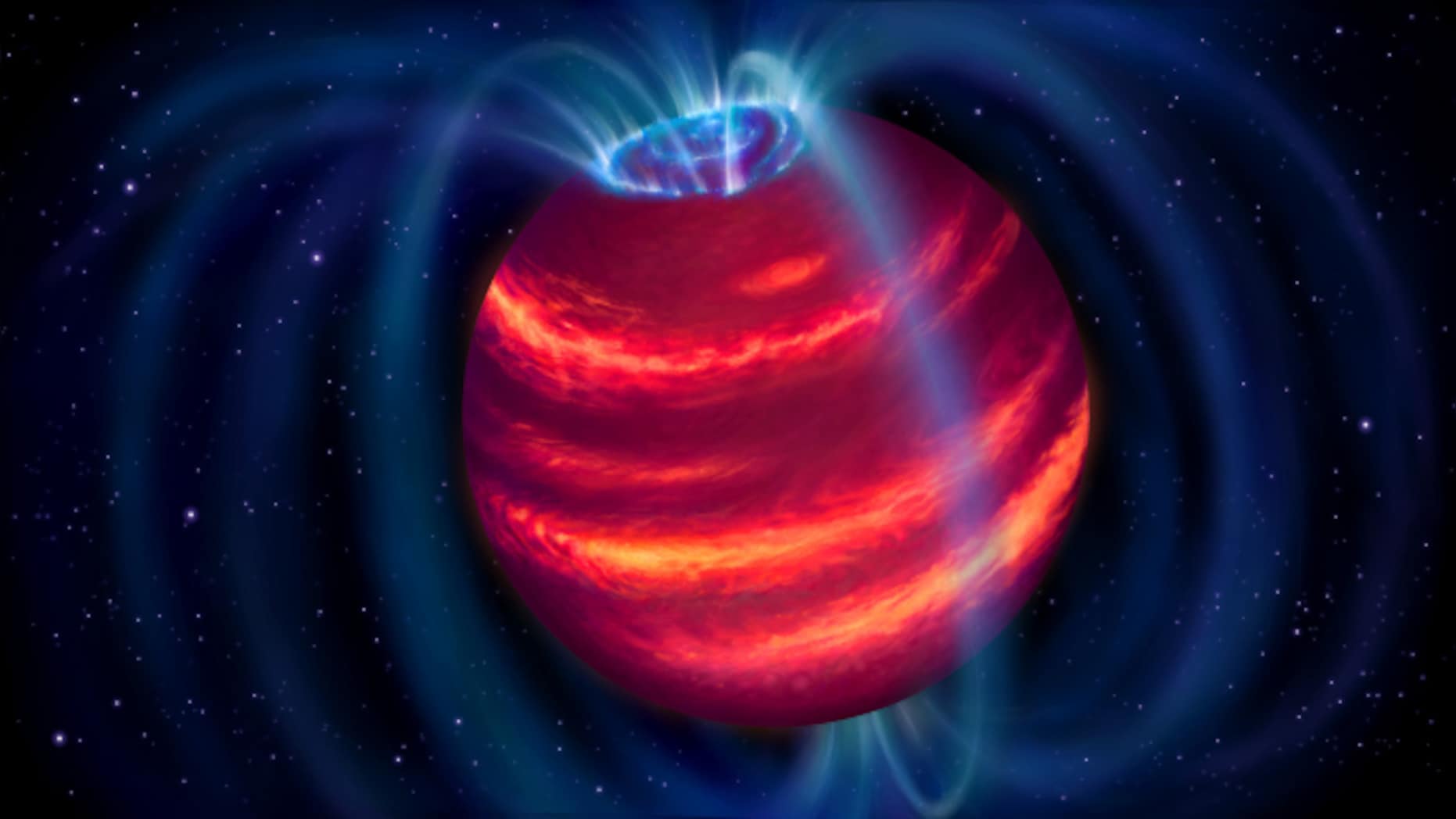Bizarre ‘super planet’ discovered for first time with radio observations

Researchers have discovered a bizarre “super-planet” for the first time using radio observations, according to a new study.
Known as BDR J1750+3809 or Elegast, the “super-planet” is actually a brown dwarf, a celestial object that is too cold and small to be a star. The discovery was made by researchers at the University of Hawaii, working in conjunction with tools from NASA and the Low-Frequency Array (LOFAR) telescope in Europe.
“This work opens a whole new method to finding the coldest objects floating in the sun’s vicinity, which would otherwise be too faint to discover with the methods used for the past 25 years,” the study’s co-author, Michael Liu, said in a statement.
Brown dwarfs are generally harder to find using methods that astronomers normally use to find other stars. However, the light they emit at radio wavelengths was vital in the discovery of Elegast, the researchers added.
Since they lack the mass to trigger hydrogen fusion, they can’t be considered stars. Given their gaseous atmospheres, brown dwarfs resemble Jupiter and Saturn, the gas giants in our solar system, more than they resemble stars themselves.
“We asked ourselves, ‘Why point our radio telescope at cataloged brown dwarfs?'” the study’s lead author, Harish Vedantham, added. “Let’s just make a large image of the sky and discover these objects directly in the radio.”
With the discovery of BDR J1750+3809, the researchers hope that more brown dwarfs — the closest things to exoplanets — could be discovered with radio telescopes.
The research has been published in the Astrophysical Journal Letters.
More than 4,500 exoplanets have been discovered so far, with only a small portion thought to have the properties to contain life.
In October, a separate group of researchers discovered 24 potential “superhabitable” planets that may have conditions more suited to host life.



 Creators of mankind
Creators of mankind Description of “Tall white aliens”
Description of “Tall white aliens” Where they came from?
Where they came from? About hostile civilizations
About hostile civilizations The war for the Earth
The war for the Earth “Tall white aliens” about eternal life
“Tall white aliens” about eternal life Video: “Nordic aliens”
Video: “Nordic aliens” Aliens
Aliens Alien encounters
Alien encounters The aliens base
The aliens base UFO
UFO Technology UFO
Technology UFO Underground civilization
Underground civilization Ancient alien artifacts
Ancient alien artifacts Military and UFO
Military and UFO Mysteries and hypotheses
Mysteries and hypotheses Scientific facts
Scientific facts


















